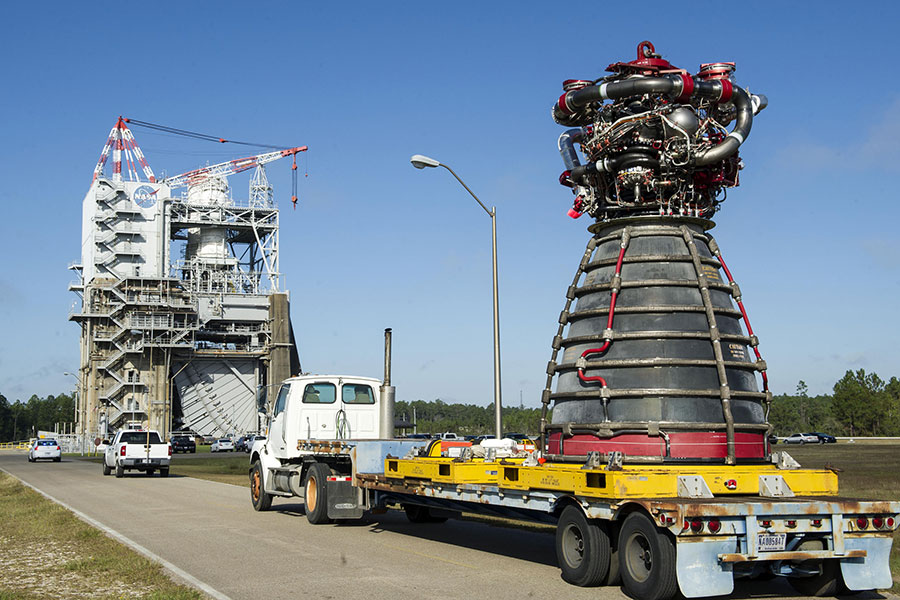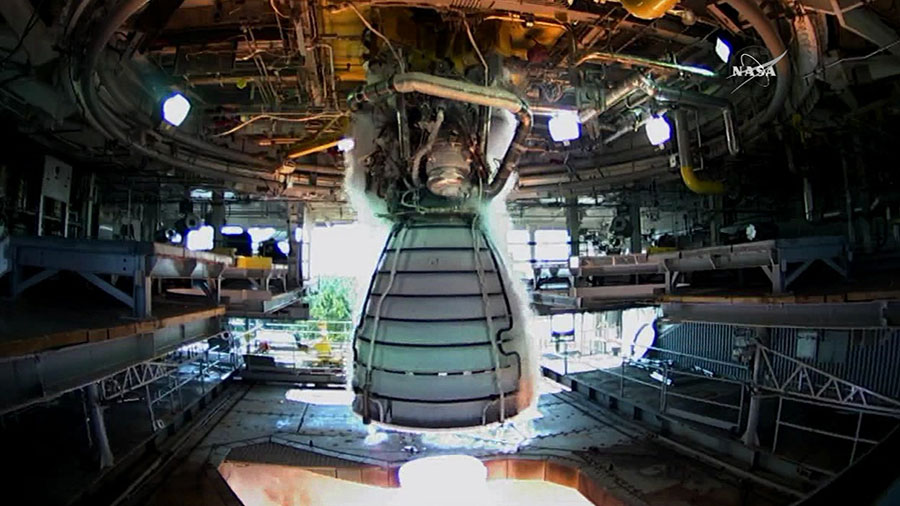As part of its desire to explore deep space, the U.S. based space agency, NASA, ran a series of successful tests on an RS-25 rocket engine. The engine was successfully fired for 420 seconds on August 18.
The test on this former shuttle engine was performed at the Stennis Space Center in Mississippi and is part of NASA’s Space Launch System (SLS) deep space rocket, which will be used to explore the reaches of space beyond Earth’s orbit.

The RS-25 engines
The RS-25 engines were built by Aerojet-Rocketdyne and previously used to launch shuttle missions.
NASA plans to use four of these engines alongside two solid booster engines to provide the SLS with the power necessary to reach deep space.
According to the space agency, the former shuttle engines could work at a higher performance level than usual if properly used.
Three tests were done, six more to go
The higher performance level is the feature that had been individually tested on Thursday, along with whenever or not the control system of the engines would work properly with the one designed for the SLS rocket.
The engine successfully fired for those seven minutes with power between 80 and 111 percent of its rated thrust.
This third test on the RS-25 engine closed off two days worth of media events where NASA officials shared information about their plans to explore the red planet, Mars.
The six tests will provide NASA engineers with all the necessary data about their performance, and eventually four RS-25 engines will be installed on the SLS rocket’s core stage and fired all at once.
The remaining performance tests are set for this fall.

The history of the RS-25 engines
Many of these RS-25 engines were used in previous missions, and all fifteen shuttle engines transferred from the Kennedy Space Center in Florida to the facility in Mississippi were found to be in good condition.
This batch also includes nine of the last Space Shuttle Main Engines (SSMEs) to be used by the NASA.
One particular engine, known as E2059, was used in five previous missions as is set to be utilized in the second core stage of the Exploration Mission-2 (EM-2), which would be the first crewed mission of the SLS/Orion spacecraft.
Rick Mastracchio, a space shuttle astronaut, also described tests being carried out on the space station with the purpose of preparing technologies for long journeys across the solar system.
The Space Launch System rocket
According to Mastracchio, the SLS mega rocket is “going to be the most powerful rocket ever built when it’s done several years from now on.”
He also notes that to go into deep space, the rocket will have to get rid of most of its hardware in low Earth orbit.
In a NASA TV broadcast, he also stated: “I think now is a very exciting time for NASA.”
This statement came as a response to someone who, upon hearing he worked for the agency, claimed they thought NASA had gone “out of business.”
https://youtu.be/hVEcAlt4iK4
Sources: TechTimes
